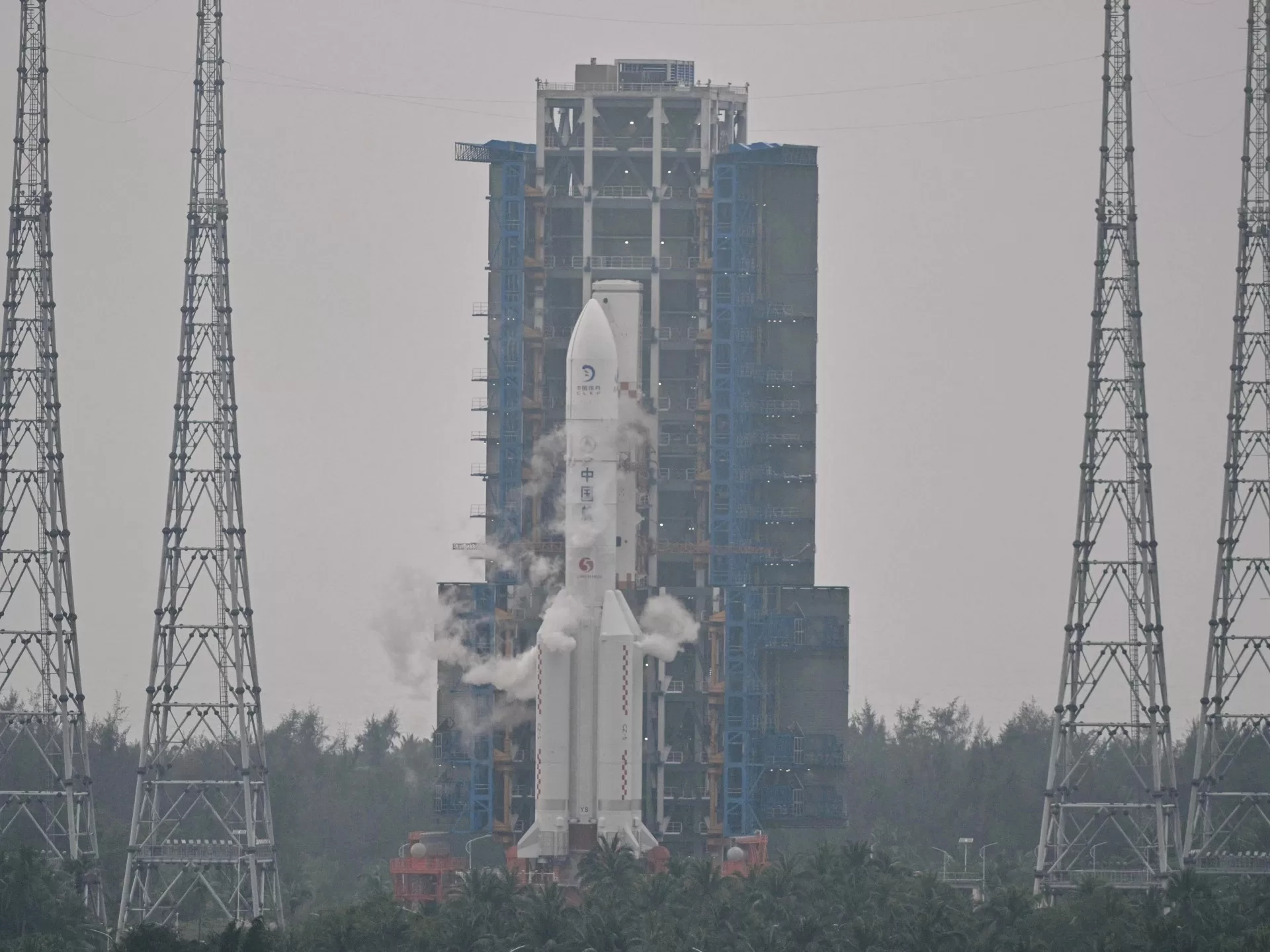Unprecedented 53-day mission aims to retrieve lunar rocks and soil from far side that never faces Earth.
China’s largest rocket has blasted off to space carrying the Chang’e-6 lunar probe for a nearly two-month mission to retrieve rocks and soil from the far side of the moon, in a world-first attempt.
The Long March-5 rocket lifted off at 5:27pm (09:27 GMT) on Friday from the Wenchang Space Launch Centre on the southern island province of Hainan with the more than eight-tonne probe.
The launch marks another milestone in China’s lunar and space exploration programme.
“Collecting and returning samples from the far side of the moon is an unprecedented feat,” Wu Weiren, chief designer of the country’s lunar exploration programme, told state news agency Xinhua.
Chang’e-6 is named after the Chinese mythical moon goddess.
“We know very little about the moon’s far side. If the Chang’e-6 mission can achieve its goal, it will provide scientists with the first direct evidence to understand the environment and material composition of the far side of the moon, which is of great significance,” he said.
Like its predecessor Chang’e-5, the Chang’e-6 comprises an orbiter, a lander, and an ascender, as well as a mechanism that allows it to return to Earth, according to Xinhua.
The South Pole-Aitken Basin, where Chang’e-6 is set to land, is on the dark side of the moon that remains mysterious as it perpetually faces away from Earth.
In 2018, Chang’e-4 gave China its first unmanned moon landing, also on the far side.
In 2020, Chang’e-5 marked the first time humans retrieved lunar samples in 44 years, and Chang’e-6 could make China the first country to retrieve samples from the moon’s “hidden” side.
Foreign payloads
The launch was attended by scientists, diplomats and space agency officials from France, Italy, Pakistan, and the European Space Agency (ESA), all of which have moon-studying payloads on board Chang’e-6.
But no organisations from the United States applied to get a payload spot, according to Ge Ping, deputy director of the China National Space Administration’s (CNSA) Lunar Exploration and Space Programme.
China is barred by US law from any collaboration with US space agency NASA without congressional approval.
After the probe separates from the rocket, it will take four to five days to reach the moon’s orbit. It is expected to land on the moon in early June.
Once it lands, the probe will spend two days digging up 2kg (4.4lb) of samples. With those sealed in a container, it will then reconnect with the returner for the trip back to Earth.
Chang’e-6 is expected to land in north China’s Inner Mongolia in about 53 days, CNSA said.
“The samples collected by Chang’e-6 will have a geological age of approximately four billion years,” Ge told journalists.
Besides uncovering new information about the celestial body closest to Earth, Chang’e-6 is part of a long-term project to build a permanent research station on the moon: the China and Russia-led International Lunar Research Station (ILRS).
China’s space programme aims to put astronauts on the moon by 2030, bring back samples from Mars and launch three lunar probe missions over the next four years. The next is scheduled for 2027.
